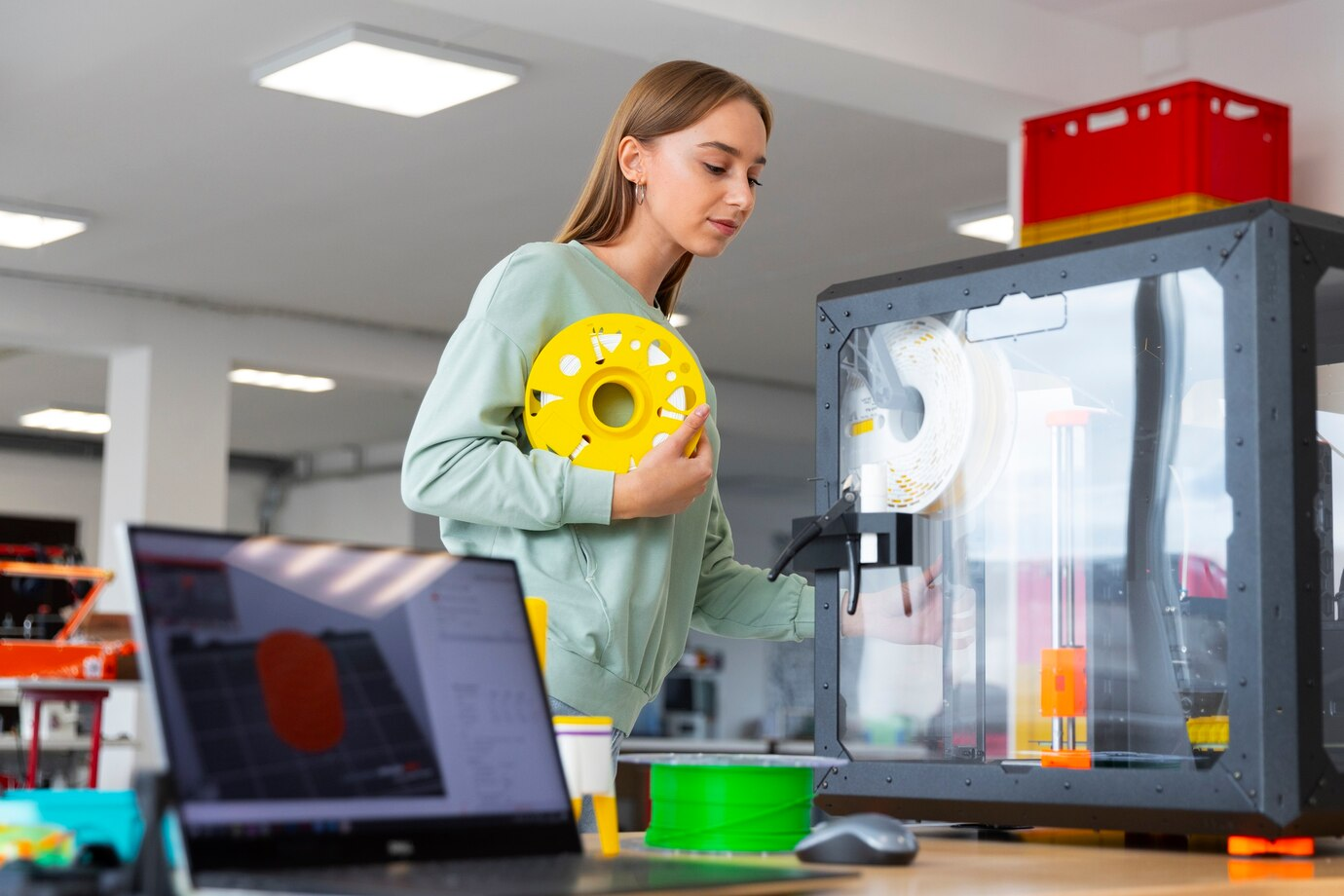
Nutrition technology has reached a milestone with molecular food printers, which enable the creation of meals that exactly match an individual’s dietary requirements. Such machines present athletes with unprecedented opportunities to optimise their nutrition for performance and recovery. These printers allow very high levels of customisability in meal assembly at the molecular level, thus making it possible to provide all the necessary nutrients needed for peak athletic achievement.
How Molecular Food Printers WorkMolecular food printers use sophisticated methods to build up meals precisely. They function by depositing layers of food components chosen and mixed together at the molecular level to attain specific nutrient combinations. These devices use essential nutrient, protein, carbohydrate, fat, vitamin, and mineral-filled cartridges. The printer then assembles a meal through additive manufacturing, where it stacks ingredients one after another in the correct proportions.
This technique guarantees that each serving is designed with even the least nutritional aspect in mind according to an athlete’s exact dietary requirements. For those who are not only interested in optimal nutrition but also in sports, Download Melbet to bet on your favorite athletes and teams while they compete.
Benefits for AthleteFor athletes, there are many advantages brought about by using molecular printing of food since this allows them to personalise their diet more than ever before. Some benefits include:
- Precision Nutrition: Meals can be made to contain exact amounts of macronutrients and micronutrients that enhance performance.
- Personalised Meal Plans: Dietary plans can be adjusted depending on individual preferences or training programmes.
- Quicker Recovery: Meals optimised nutritionally may help in faster recuperation by supplying essential elements immediately after exercises.
Furthermore, among other things, these types of printers also seamlessly cater for different dietary limitations or choices. Whether someone is a vegan athlete, cannot consume gluten due to allergy concerns, or belongs to any other category requiring such specific needs to be met during every meal, these gadgets ensure all meals served support training.
Integration with Health and Fitness DataTo ensure personal nutrition plans, molecular food printers can seamlessly blend in with health and fitness data. These printers can make meals that back an athlete’s requirements by using information from well-being appraisals as well as exercise monitors, which promote performance improvement.
Dynamic Nutritional AdjustmentMeal formulations can be adjusted dynamically by printers with advanced technology depending on an athlete’s real-time fitness tracker or health assessment data. This implies that when a sportsman changes the level of activity, the nutrient composition in meals can be altered by the printer accordingly.
For instance, after an extremely intense training session, the printer could raise proteins and carbohydrates for muscle recovery support as well as replenishment of energy stores used up during exercises. This ability guarantees the best possible immediate requirement-based nutrition support for athletes, hence fostering both performance and recuperation processes.
- Mavhunga puts DeMbare into Chibuku quarterfinals
- ‘Zec refuses to release voters roll’…Mangwana, Silaigwana evasive
- In Full: Nineteenth post-cabinet press briefing: July 05, 2022
- Health talk: Be wary of measles, its a deadly disease
Keep Reading
Molecular food printers have a wide range of meal individualisation options which take into account factors like metabolic rates, specific goals, nutritional preferences, etc. These devices use detailed health information to customise diets according to an athlete’s needs.
Therefore, some examples could be higher caloric content for individuals with high rates of metabolism, while others may need their foods prepared without certain components due to allergies or other reasons connected with this matter. Such a personalised approach ensures that all players get proper nourishment required for them to achieve record results, considering their different dietary demands and likes/dislikes too.
Problems in AdoptionThere are numerous challenges involved with adopting molecular food printing technology for athlete nutrition. Some of them include:
- Expensiveness: The cost of buying the printers themselves and maintaining them is high, thus limiting their use among small teams or individuals.
- Complicated Machines: These complex devices need special skills and knowledge to operate them correctly and keep them in good working condition, which might call for staff training or hiring experts.
- Comprehensive Nutritional Data: Precise meal plan creation needs accurate, extensive nutritional data which may take long to gather and should involve collaboration between dietitians, coaches, trainers, nutritionists, among others.
Nevertheless, the possible benefits of molecular food printing technology make it a valuable investment for bettering players’ health.
Future Implications for Sports NutritionDevelopments made through molecular food printing could shape the future of sports nutrition greatly. More accurate and faster customisations regarding meals can be realised as the technology advances further, thereby boosting athletes’ performance during competitions. Moreover, integration with nascent nutritional science findings may result in new dietary strategies that optimise an athlete’s diet at every level.
Also, widespread adoption of these machines may bring down their prices, hence making them affordable. Ultimately, in a long-term perspective, molecular food printers will become ordinary equipment used by sports nutritionists to support healthy living among players through diet improvement, awareness creation campaigns, etc.
For the purpose of transforming sportsman nutrition, it can be said that molecular food printers have a lot of great potential. These appliances could fit into the daily routine of any sportsperson by providing individualised diet support, thereby enhancing performance and recovery as well as catering for unique nutritional needs.







